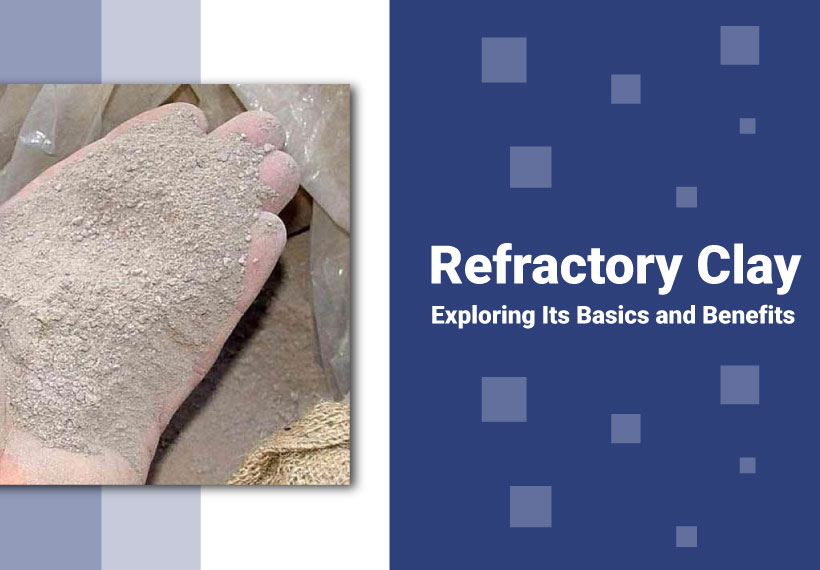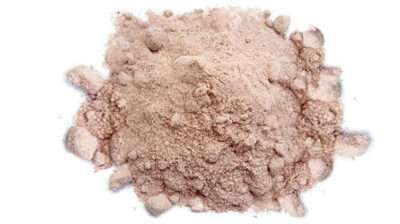What is Refractory Clay? Exploring Its Basics and Benefits

Refractory materials have been a crucial component in various industries, playing an essential role in applications where high heat, corrosion, and wear resistance are necessary.
Among these materials, refractory clay stands out as one of the key players due to its unique properties and versatile applications.
In this article, we’ll delve into the world of refractory clay, understanding its basics, exploring its benefits, and discovering its significance across industries.
Understanding Refractory Clay
Refractory clay, also known as fire clay, is a type of clay that has been specially formulated to withstand high temperatures without losing its structural integrity.
It is composed primarily of alumina and silica, with varying proportions of other minerals depending on the intended use. it is carefully processed to remove impurities that could weaken its resistance to heat and corrosion.
Types of Refractory Clay
There are several types of refractory clay, each designed to excel in specific conditions and applications:
1. Firebrick Clay
Firebrick clay is the most common type of refractory clay. It’s used to manufacture firebricks, essential components in kilns, furnaces, and other high-temperature industrial equipment.
2. Kaolin Clay
Kaolin clay, also known as china clay, is widely used in ceramic production and as a refractory material due to its excellent thermal and mechanical properties.
3. Chamotte Clay
Chamotte clay is pre-fired refractory clay, making it particularly suited for creating insulating materials in industries like metallurgy and glassmaking.
Applications of Refractory Clay

The unique properties of refractory clay make it invaluable across various industries:
1. Steel Industry
Refractory clay lines the walls of blast furnaces and steelmaking ladles, providing insulation and protection against extreme temperatures and chemical reactions.
2. Glass Industry
In the glass industry, refractory clay is employed to manufacture crucibles, moulds, and other equipment used to produce glass products.
3. Cement Industry
Refractory clay is utilized to create refractory linings in cement kilns, ensuring durability under the intense heat and corrosive conditions of cement production.
4. Foundries
Foundries use refractory clay to produce moulds and cores in the casting process. Its resistance to high temperatures and wear helps maintain the shape and quality of cast metal products.
Benefits of Refractory Clay
Refractory clay offers a range of benefits that contribute to its widespread use:
1. Heat Resistance
The primary advantage of refractory clay is its ability to withstand extremely high temperatures, making it an ideal choice for industries where heat is a constant factor.
2. Chemical Resistance
Refractory clay’s resistance to chemical reactions is crucial in industries dealing with corrosive materials or processes, ensuring a longer lifespan for equipment.
3. Insulation Properties
The insulating properties of refractory clay contribute to energy efficiency by reducing heat loss in various high-temperature applications.
4. Longevity
Equipment lined with refractory clay tends to have a longer service life, reducing maintenance costs and downtime.
Challenges and Considerations
While refractory clay offers numerous benefits, it’s essential to be aware of potential challenges:
1. Installation Complexity
Applying refractory clay linings requires expertise and precision, as improper installation can lead to reduced performance and premature failure.
2. Thermal Shock
Sudden temperature changes can cause thermal shock, potentially leading to cracks and weakening of the refractory clay lining.
FAQs
Is refractory clay the same as regular clay used in pottery?
No, refractory clay is specially formulated to withstand high temperatures and chemical exposure, making it distinct from the clay used in pottery.
Can refractory clay be recycled or reused?
Yes, refractory clay can often be recycled or reused after it has served its initial purpose, reducing waste.
How is refractory clay processed and manufactured?
Refractory clay undergoes a careful mining, purification, and shaping process to create various refractory products.
Are there environmentally friendly alternatives to refractory clay?
Researchers are exploring eco-friendly refractory materials, but refractory clay remains a reliable and commonly used choice.
Can refractory clay-lined equipment be repaired if damaged?
In some cases, damaged refractory clay linings can be repaired, but the extent of the damage and the expertise required determine the feasibility.
Conclusion
Refractory clay, with its remarkable heat and chemical resistance properties, plays an indispensable role in industries reliant on high-temperature processes.
Refractory clay ensures crucial equipment’s longevity and efficiency, from steel to glass, cement to foundries.
As technology advances, the development of innovative refractory clay formulations continues to expand its applications, solidifying its significance across diverse sectors.

